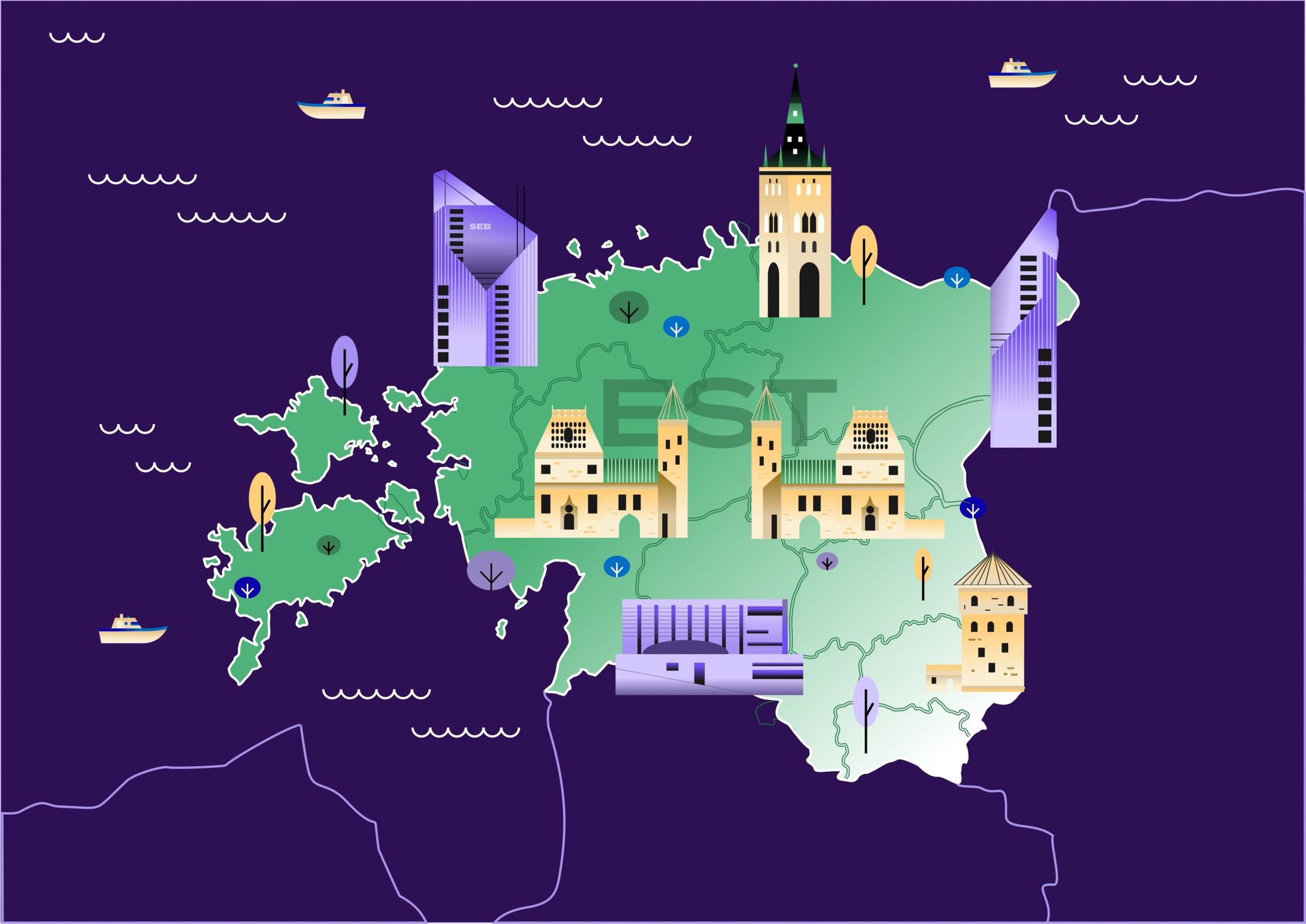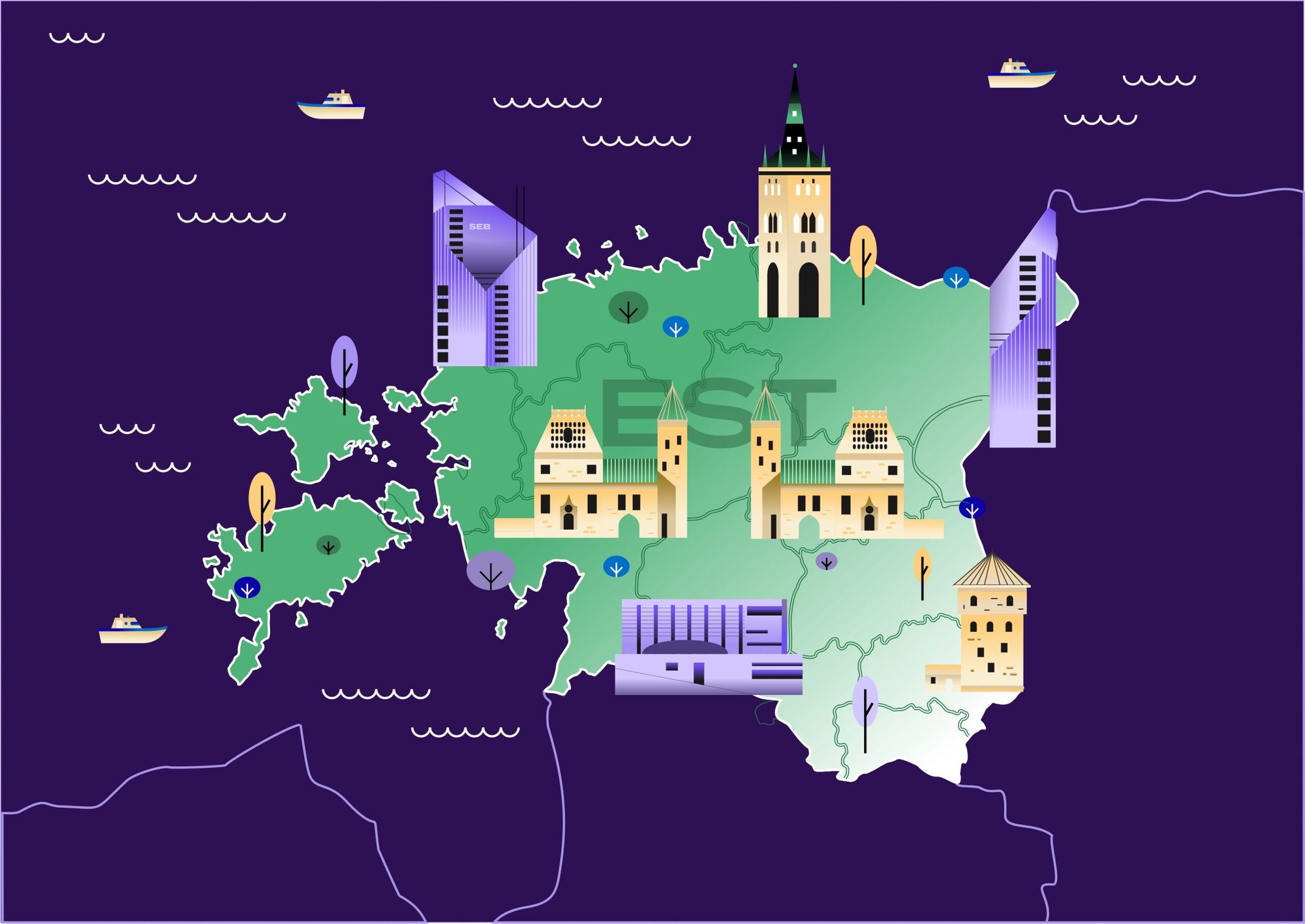More than thirty years have passed since the dissolution of the Soviet Union, which left an enormous economic and political void in Central and Eastern Europe. In this series of articles, we explore the responses of the countries of the region to the new circumstances: how they could adapt to capitalism, how successful their democratization was, and what lessons they can learn from each other. We begin with the northernmost of the Baltic states: Estonia. Part I.
The Baltic region was the most developed area of the Soviet Union. The living standard was the highest here; according to some estimations, Estonian incomes could be even twenty percent higher than the Soviet average. The region was experiencing massive industrialization, just like many other areas of the Soviet Union. However, it was not very advantageous since the Baltic states have traditionally been agricultural economies.
The Estonians had already initiated reforms in the 1980s, and when they gained independence in 1991, it became apparent that systematic economic and social changes were inevitable. After the restoration of independence, several problems had to be simultaneously addressed. The massive influx of Russian immigrants during the Soviet occupation of Estonia causes social issues to this day. Furthermore, the industrial and agricultural sector’s production drastically fell, while the service sector has always been at a low level. Inflation had reached 1000 percent by 1992. Estonian leaders quickly realized that the country needed its own currency, as the Soviet ruble had lost its value, and thus the people tried to get rid of it, causing even higher inflation. Not to mention the effects of the liberalization of the economy and raising official prices.
In June 1992, the Estonian kroon was introduced, pegged to the Deutsche Mark, and later to the euro. This was a necessary but not sufficient step to tackle the massive inflation. Therefore, Estonia did not allow the central bank to lend money to cover the budget deficit. Lithuania has also followed the policy of monetary tightening, which resulted in high nominal interest rates in these countries. The fixed exchange rate and the consistent monetary policy created an attractive environment for foreign investors, thus promoting economic development and integration into the world economy.
During the democratic transition, Estonia recognized that the return of expatriate intellectuals was crucial for its independence since they could draw on their global experience to help the country. Nonetheless, it is important to note that culturally and geographically close Scandinavian experts and Western organizations also greatly assisted the successful monetary reform.
As in many other economic reforms, Estonia has been the region’s pioneer in trade liberalization. While in the last years of the occupation, almost ninety-five percent of the country’s exports went to the Soviet Union, since 1992, the EU, mainly Finland, became the country’s leading trading partner. This year, export to the post-Soviet states shrunk to only a third of the country’s total exports. The country’s large oil reserves also helped Estonia’s successful disengagement from the Russian economy.

By 1995 there were hardly any small and medium-sized enterprises left in the hands of the state, and the large corporations were also privatized in 1998. In 2000 utility companies, such as power plants and railway companies, were added to the privatization list. The Estonian government used two methods: voucher privatization and direct sale. The vouchers were given to the workers for the years they worked, and they could use them to buy the property. Perhaps one of the key incentives for privatization was the bankruptcy act, which stated that the company would be liquidated if the acquirers did not privatize the corporation quickly. This process led to a higher inflow of foreign investment.
Nonetheless, it must be emphasized that, as in many other countries in the region, the transition in Estonia has not been smooth either. Many workers lost their jobs after the large, centralized corporations collapsed. The unpredictability of the new world order has had a severe negative impact on Estonians’ mental health. Life expectancy began to decline steadily from 1988 onwards because of increased stress, crime, and suicide, reaching a nadir of 66 years in 1994 and returning to the 1988 level just around 2000.
After the political-economic transition and privatization, Estonia’s next goal became to catch up with the Western part of the continent. The favorable conditions for foreign investors have helped significantly. Estonia ensured that all profits generated in the country could be transferred abroad, and the companies only had to pay corporation tax on dividends. As a result, Estonia has the highest foreign capital inflow among the Baltic states today. The lion’s share of investments comes from the Nordic countries, which can be explained by their geographical and cultural proximity.
Nowadays, everyone associates Estonia with digitalization. The Estonian Parliament has enshrined in the constitution that internet access is a fundamental human right already in 2000. Eighty-eight percent of the population has internet access, while the EU average is only seventy-nine percent. The country also has outstanding digital public services. Moreover, Estonia pays special attention to research and development. Modernizing their knowledge base and increasing the competitiveness of Estonian entrepreneurs have been priorities since 2002. After the global financial crisis of 2007-2008, R&D and innovation policy became top preferences, mainly through the development of infrastructure and higher education.
Estonia has established an exemplary education system to ensure its place among the frontrunners of innovation. Expenditure on education is several percentage points higher than the EU average, ensuring that Estonians rank among the top performers in PISA and similar tests every year.
Perhaps the most significant Estonian innovation is the e-Government. This system provides a framework to the citizens which simplifies many aspects of their lives to a great extent. In Estonia, almost all public services are available electronically, which saves time for the residents and money for the state since it does not have to maintain a huge physical bureaucratic system. In the light of this digital world, it is no surprise that any citizen who is entitled to participate in the elections can vote electronically since 2005.
Estonian contemporary history can teach us several lessons. It shows that radical times call for radical measures, and we have no time to waste: the sooner, and the faster society swallows the medicine, the quicker it can recover. If significant monetary policy reforms had not been taken after the fall of communism, the economic recovery could have been protracted. We can also learn from Estonians that a country does not have to solve all challenges independently; there are cases when it is better to let experts from more developed countries overcome the problems with their tried-and-true methods. It is a fact that Estonia was a more developed region of the Soviet Union before its independence. Nonetheless, this does not diminish the importance of that crucial realization that there are only two things that such a tiny country with limited natural resources and a small population can capitalize on: the expertise of its citizens and the country’s attractiveness to foreign investments.
Finally, Estonia shows us that innovation does not always come from where the most people are, or the most money is. Our lives have been turned upside down by the technological advances of the last few decades, and we must admit that innovation is one of the catalysts of the economy. Thus, with all its downsides, we should accept that the future of the economy and governance is intertwined with digitalization.
We will explore Latvia’s contemporary history in the next part.

Budapest, through the eyes of creative expats I. | Sandra Poliakov

Atomy Studios educates with unique shapes and use of fabric










